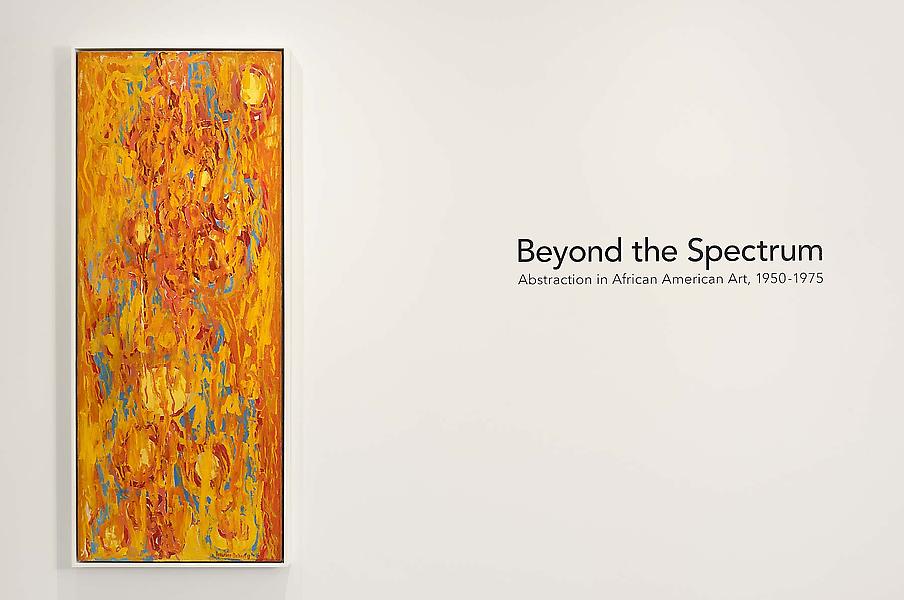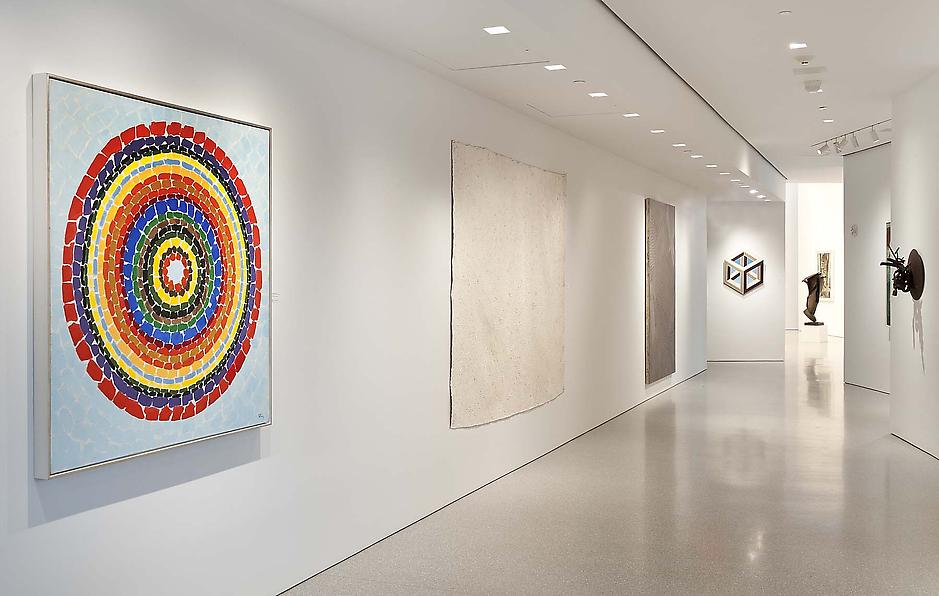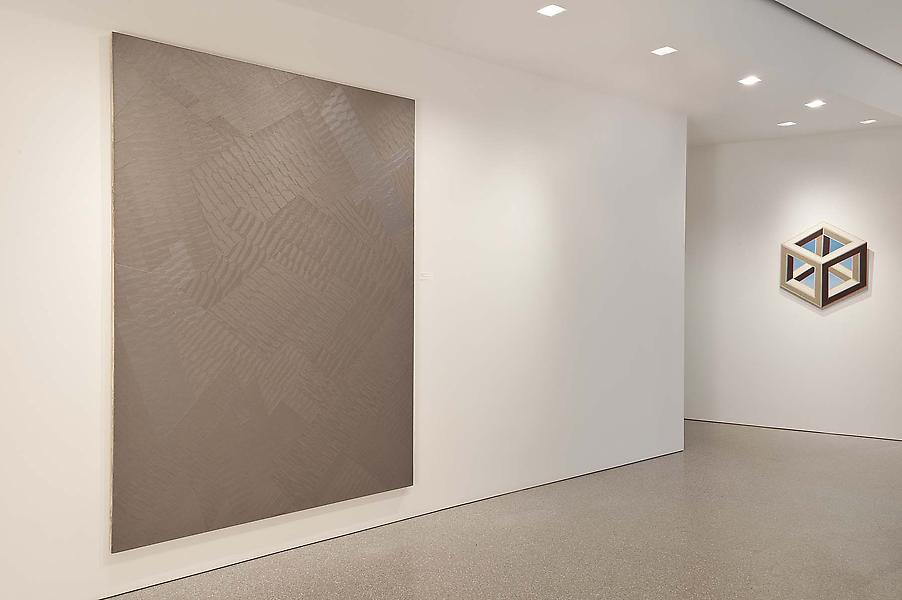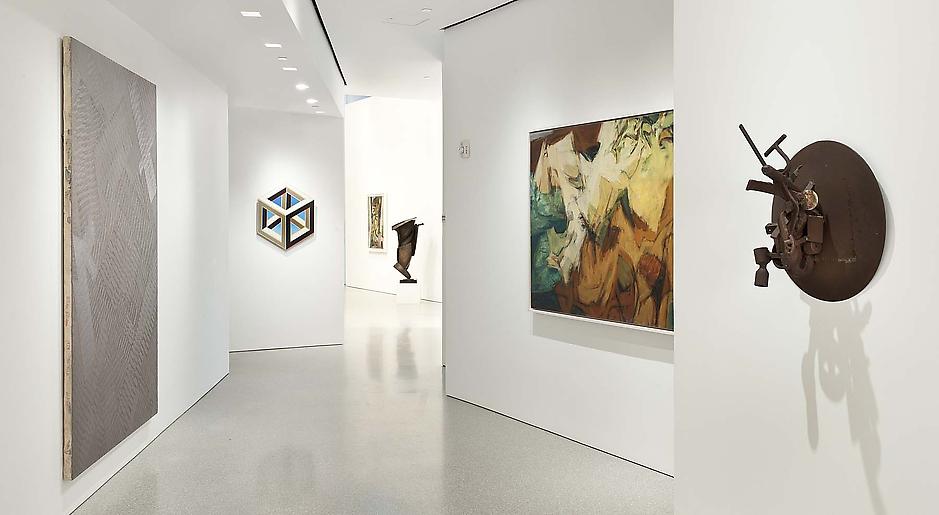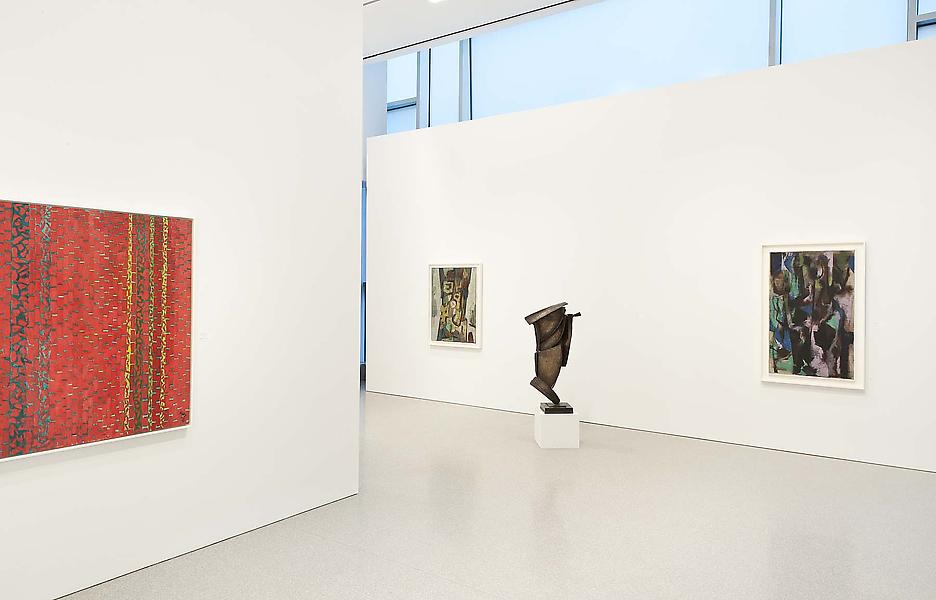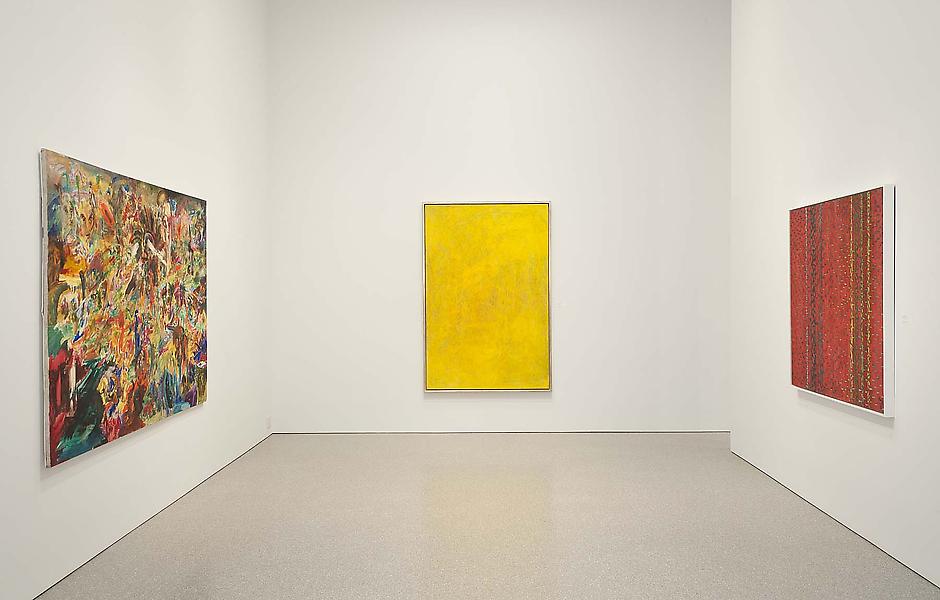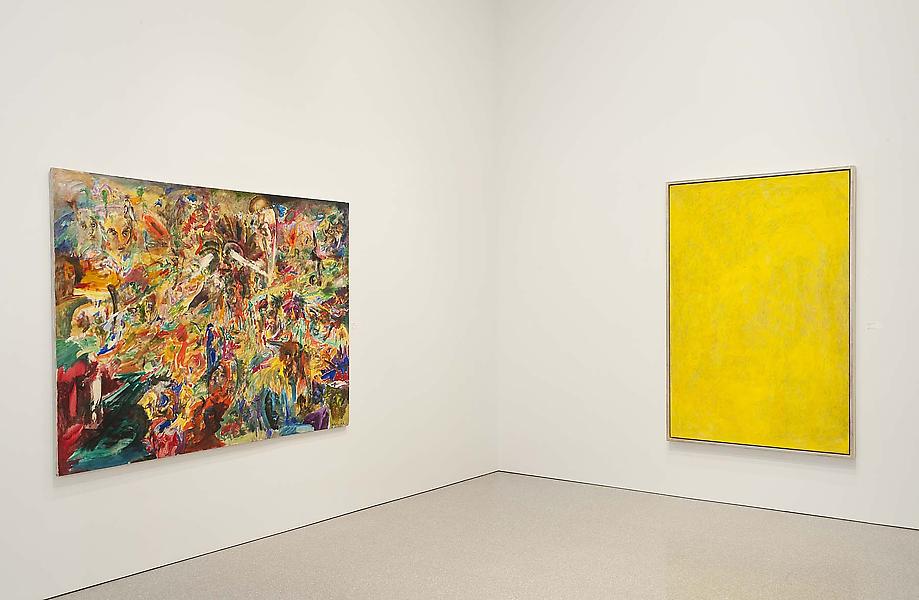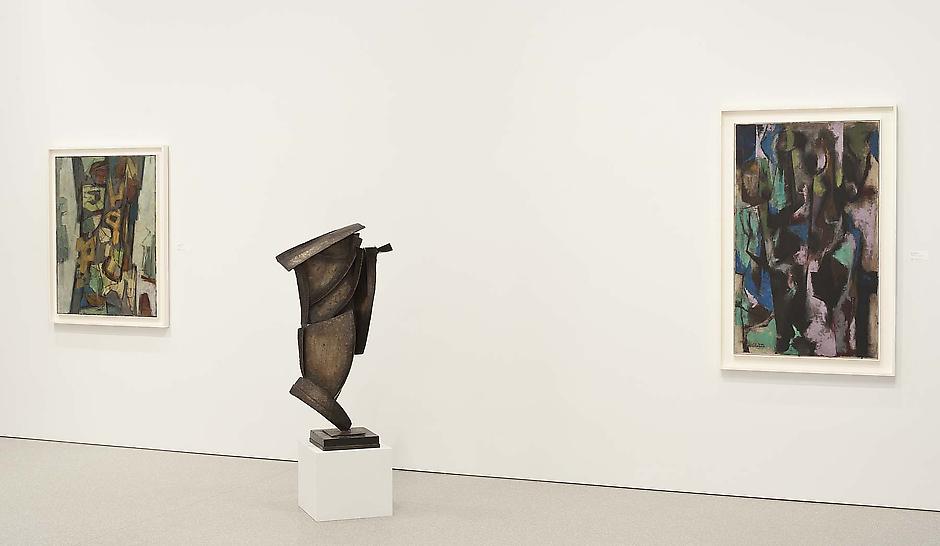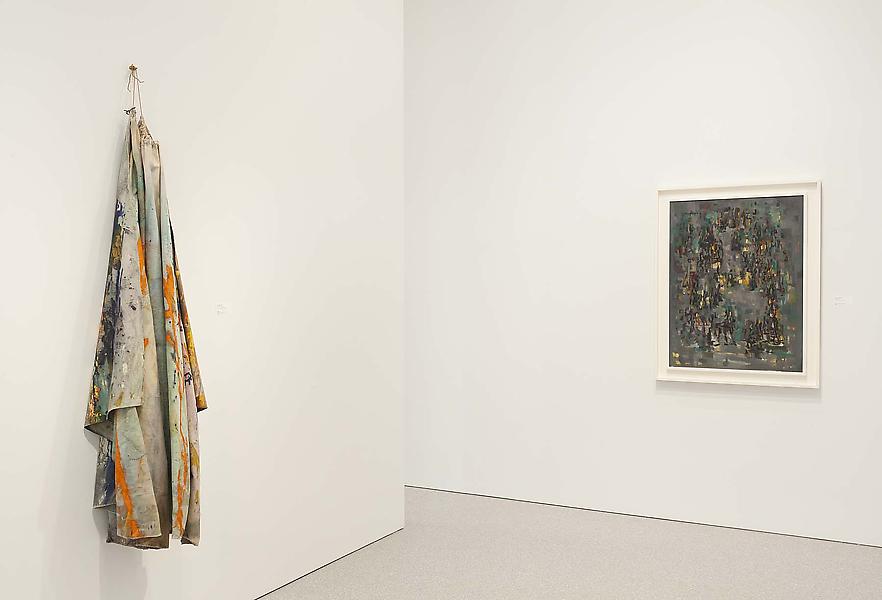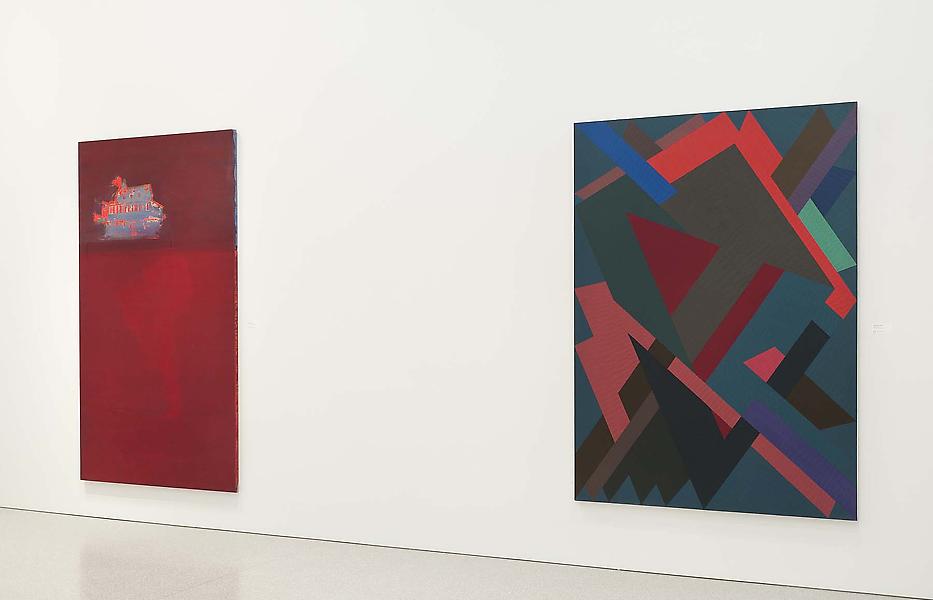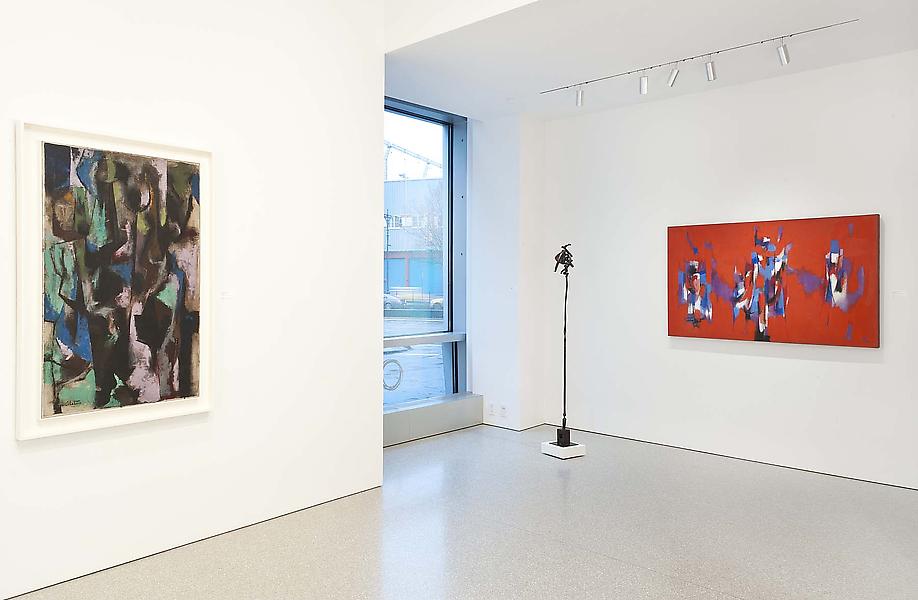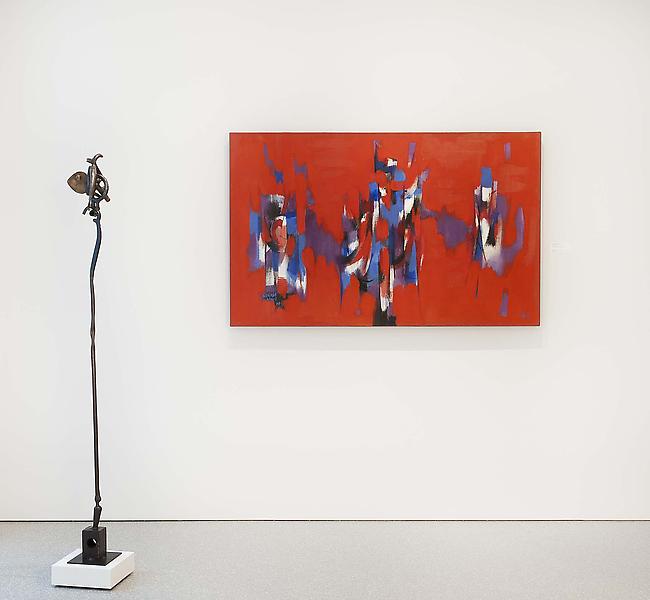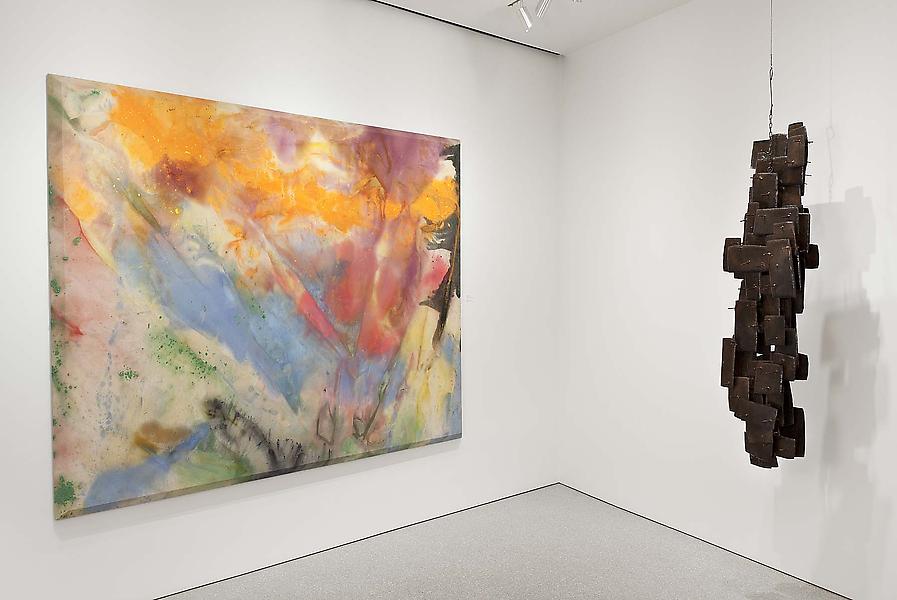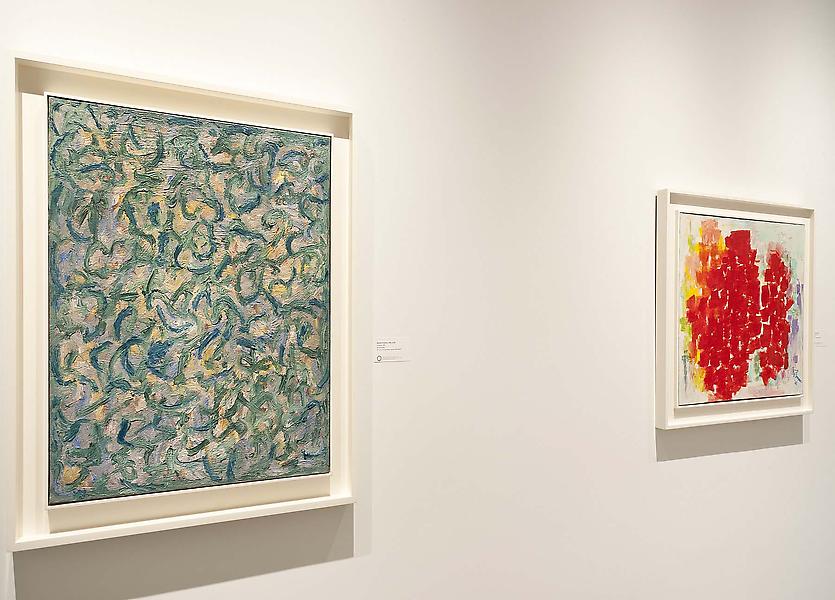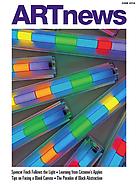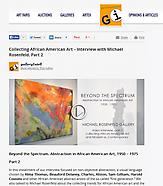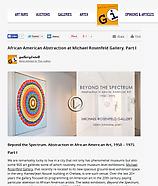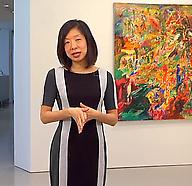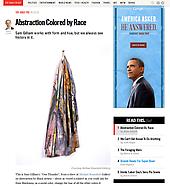RECEPTION
Saturday, January 18, 5:00-7:00PM
I think all art is abstract . . . the earliest art of human beings was figurative and abstract. Period. So there was never a time that human beings didn’t deal with both modes. To conceive of something from the world you experience, and then create or recreate based on it, is an abstract process anyway.
- Melvin Edwards
Representation versus abstraction, black versus abstraction: two analogous constructions, each artificial to the core.
- Jonathan Binstock
(New York—January 8, 2014) Michael Rosenfeld Gallery is pleased to present Beyond the Spectrum: Abstraction in African American Art, 1950-1975, an exhibition of over thirty paintings and sculptures by leading abstractionists including major works by Charles Alston, Frank Bowling, Ed Clark, Harold Cousins, Beauford Delaney, Melvin Edwards, Sam Gilliam, Richard Hunt, Norman Lewis, Al Loving, Howardena Pindell, Alma Thomas, Jack Whitten, William T. Williams, and Hale Woodruff. Since its inception, Michael Rosenfeld Gallery has consistently exhibited work by African American abstractionists, in solo exhibitions (Thomas, Delaney, Cousins, Lewis) and group shows—on mid-century American abstraction, abstract expressionism, and within its celebrated African American Art: 20thCentury Masterworks series. While many of these artists have been a constant presence in the gallery’s exhibition history, Beyond the Spectrum marks the first time that work by Bowling, Clark, Loving, Pindell, Whitten, and Williams will be on view at Michael Rosenfeld Gallery.
Beyond the Spectrum follows in the curatorial footsteps of Kenkeleba Gallery’s (New York City) groundbreaking 1991 show The Search for Freedom: African American Abstract Painting, 1945-1975 and the more recent Energy/Experimentation: Black Artists and Abstraction 1964-1980 (2006) at the Studio Museum in Harlem. Like these predecessors, Beyond the Spectrum is not intended to be a comprehensive survey of twentieth century African American abstractionists. Instead, the show presents abstract painting and sculpture by a group of American artists working in the years just before, during, and after the Civil Rights Movement. While their identity as black Americans is not the motivation for their inclusion in the show, this identity is nonetheless significant in that many found themselves marginalized in a white-dominated art world that granted limited admission to black artists and again within the Black Arts movement, which rested on a revolutionary ethos that saw abstraction as a site of established privilege, limited in its ability to express political dissent and contribute to the struggle for racial equality.
As the title suggests, Beyond the Spectrum plays on notions of spectra—of ranges and degrees between fixed polarities. Just as refraction reveals light to be far more complex than our immediate perception allows, the artists in this show reveal a plethora of positions and possibilities within the seemingly unified categories of “painting,” “sculpture,” “abstraction,” and “political/apolitical art”. In paintings by Alma Thomas and William T. Williams, the color spectrum is mined for its aesthetic and expressive potential as vivid hues are juxtaposed in dynamic compositions that pulse with energy. Working with a more limited palette, Howardena Pindell and Beauford Delaney explored the wide range of shades and intensities within a given color in their luminous paintings. Moving between media, the draped canvases of Sam Gilliam and the torn paintings of Al Loving exist on the spectrum between painting and sculpture. Finally, within the varied strands that make up abstraction, Richard Hunt, Harold Cousins and Melvin Edwards embraced welded metal to explore abstraction in the third dimension.

